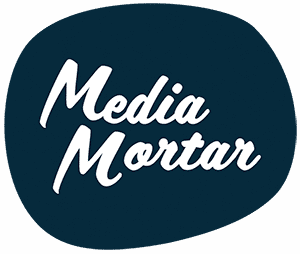
Since we’ve been presenting our social media marketing workshops across Australia, we’ve been privy to the questions small businesses have about marketing.
Most questions you expect [What is a hashtag? How do I find time for all this? Why do I need to do social media?] but other questions come out of left field. Like, what do I report and how should I set social media KPIs for my team?
*cracks knuckles*
Welcome readers to the dark art of reporting.
Here are our seven super simple steps to help you prepare the ultimate social media marketing report.
1. Report what’s quantifiable and inside your control
 Put simply, if you can count it, you can report it.
Put simply, if you can count it, you can report it.
Metrics on social media like reach, engagement, number of posts should all be stalwarts in your measurement each month.
There’s no point reporting anything you can’t control. But there is value in reporting why declines in the above may be attributed to things outside your control like global pandemics, flood, drought etc.
But really, if it doesn’t include numbers, it’s outside the scope of a social media report.
2. Don’t report vanity metrics
 We’ve made a lot of reports in our time and can guarantee the CEO of the company is usually only drawn to one thing: “how many followers did we get this month?”.
We’ve made a lot of reports in our time and can guarantee the CEO of the company is usually only drawn to one thing: “how many followers did we get this month?”.
This is your permission to stop counting followers and educate your boss on the difference between followers and customers.
If you’ve read this post, you’ll know anyone with $5 and the right Google search words can buy followers. But if you’re looking for customers in the northern suburbs of Brisbane, thousands of followers in Lithuania won’t help.
Instead, report metrics that contribute to a sale (or conversion), like engagement. That is, did your customers action something when they saw your content, or did they scroll on by.
3. Report what your objective set out to do
 If we had a dollar for every customer who sat in our office with their arms behind their head and said, “I want to see ROI”, we wouldn’t be making social calendars anymore.
If we had a dollar for every customer who sat in our office with their arms behind their head and said, “I want to see ROI”, we wouldn’t be making social calendars anymore.
The key to achieving ROI, is to articulate your objectives and set up your social media to achieve them.
The reason most social media activity doesn’t achieve ROI is not because social media failed, but rather, because the objective and activity were totally incongruous. Allow us to explain.
If your objective is to reach more people, don’t be upset it didn’t generate more signups to your eNewsletter – that wasn’t the objective. You set it up to fail.
If you want sign ups to your eNewsletter, you should set up a lead-generation campaign.
Similarly, we’re not surprised your traffic ads didn’t sell tickets to your event, if they landed on a page with no information or a point of sale for customers to buy them.
You need to make sure your objectives are realistic and measurable. No matter how much money you throw to the advertising gods, social media marketing can only ever get customers so far – and marketers can’t achieve the impossible.
4. A report is only as good as the person reading it
 In our esteemed marketing opinion, many people like to collect a report but never actually read the data or insights inside.
In our esteemed marketing opinion, many people like to collect a report but never actually read the data or insights inside.
In fact, a colleague friend of ours who worked for a large hotel chain used to embed statements like ‘Gary is a purple dinosaur’ just to test if anyone read her tome-of-a-report.
Want to know the horrifying thing? No one picked up her humour in her seven years with the company.
Anything can be reported, but the real skill is being able to read through the clutter contained within pretty graphs pumped out by social media platforms.
Report what you want to know and keep it simple – the data tells the story, so you don’t need to. If you’re looking for a template report, you’ll find what we send to our clients in our Social Skills Handbook.
5. Conversion isn’t the only measurement tool
 Of course, we’d all like to have more money in the bank, but that’s not the only measurement to report.
Of course, we’d all like to have more money in the bank, but that’s not the only measurement to report.
Consider adding these into your report:
- Total number of posts
- Post reach
- How many comments the post received
- Was the post shared
- Number of shares or clicks the post got
The sum of all these parts will allow you to ask important questions about what content your followers like, don’t like and what you could be doing to improve. And really, what you do next with the report, is the bit that counts.
Remember the purpose of the report is to finetune your social media marketing activity so it can continually improve. If your followers aren’t connecting with the people photos, swap them for landscapes if they are proven to work – and to hell with what everyone else thinks.
When it comes to social media marketing, the only stakeholder you should be concerned about is the customer. The biggest barrier we see to social success is internal thinking, rather than external speaking.
6. KPIs can be whatever you like – so long as they’re achievable
 There is no one size fits all KPI – but you want to make sure they are achievable.
There is no one size fits all KPI – but you want to make sure they are achievable.
If you’re not paying for social media advertising, accept that your staff are realistically only going to move the engagement needle by very small increments year-on-year.
Given the average Instagram engagement rate is only 4.7% (and brands are often much less), you want to be realistic about how many people you think will like, comment and share your content.
We often sit down to new client meetings where the KPIs proposed are more than six times the average engagement rate.
This is a beyond reasonable expectation, especially when the company isn’t prepared to provide six times the advertising dollars to get the attention of the consumer.
7. Benchmark yourself against competitors
 If you thought your growth was slow – wait ’til you start benchmarking your competitors – and you’ll see you’re in a race set at a snail’s pace.
If you thought your growth was slow – wait ’til you start benchmarking your competitors – and you’ll see you’re in a race set at a snail’s pace.
When we report monthly, we’ll not just focus on our own gains, but our competitor set too.
This allows us to see where our growth is consistent, and equally where it’s falling behind.
If it’s falling behind, we ask the important question – why? Sharp growth in your competitor’s follower numbers generally reveal one thing, your competitors are out spending you.
If that’s the case, it’s time to sit down and set an online strategy. Lucky for you, we’ve made just the thing.
If you want more information about social media marketing reporting, you’ll find a whole chapter in our Social Skills Handbook or you can book a training session with us.

By Hannah Statham
Hannah Statham is The Boss at Media Mortar. She’s a heavy weight wordsmith, punching with puns, analogies and metaphors that leave readers wanting more. When she’s not refreshing her Instagram feed, you’ll find Hannah walking her rescue greyhound Olivia.

Recent Comments